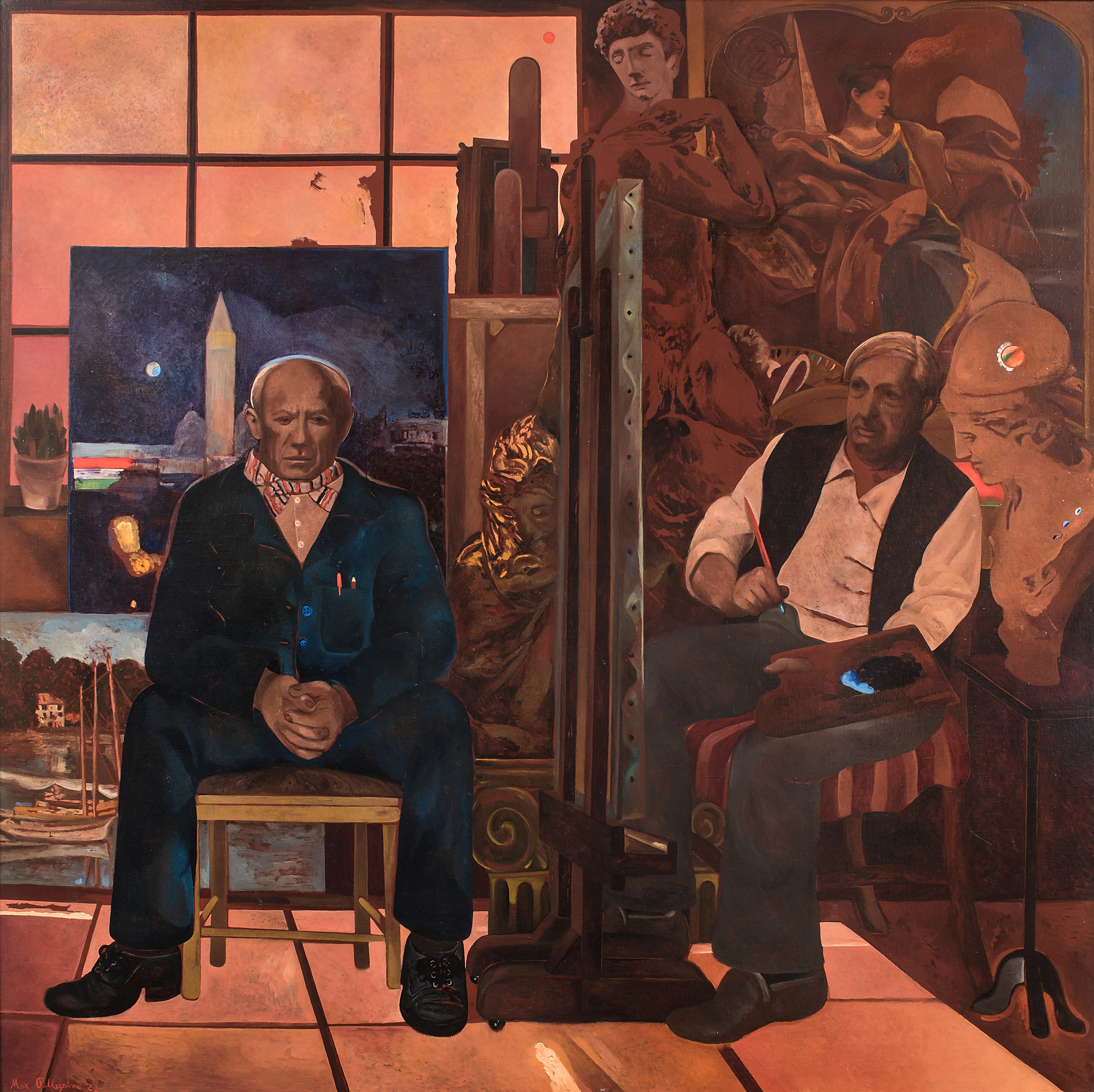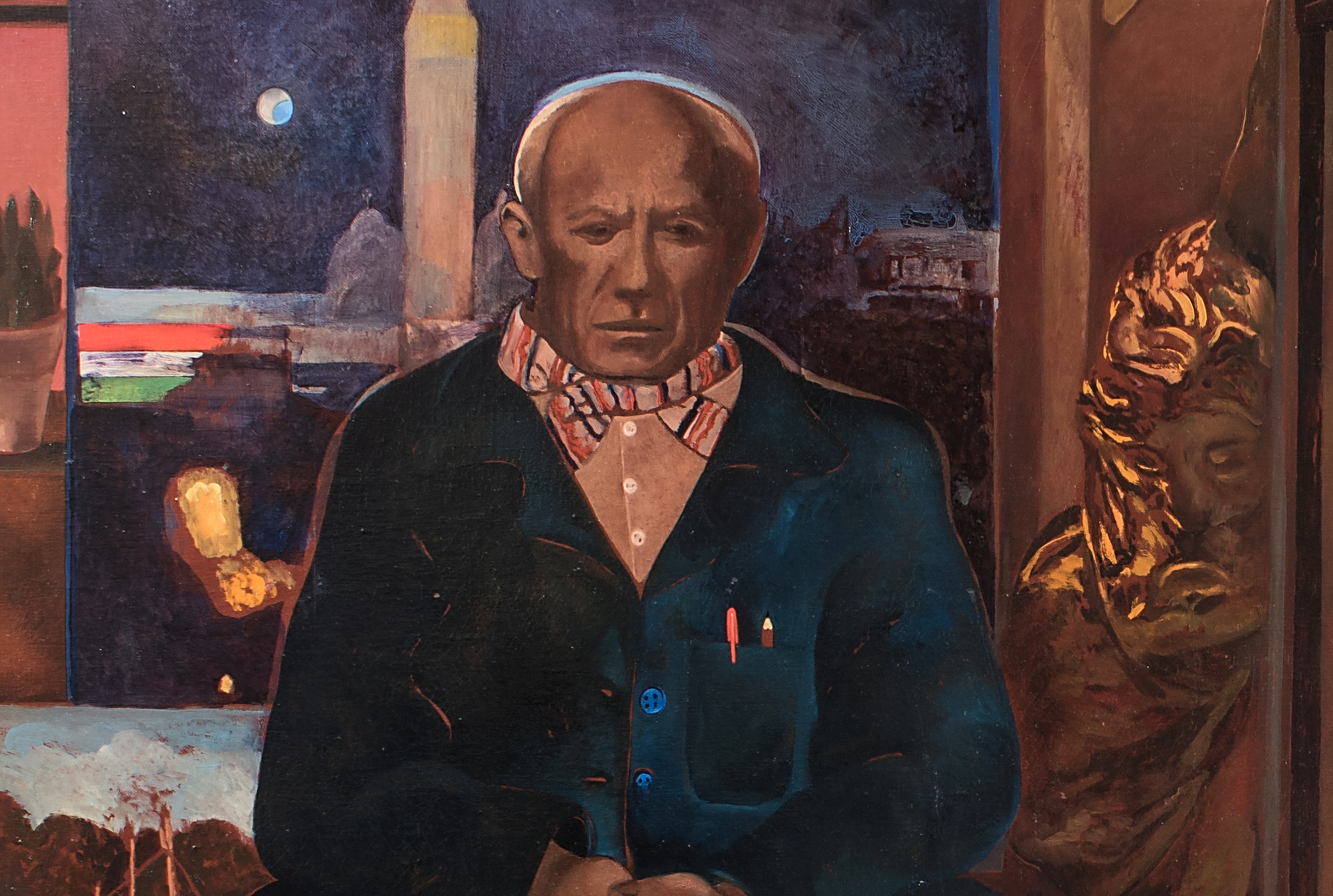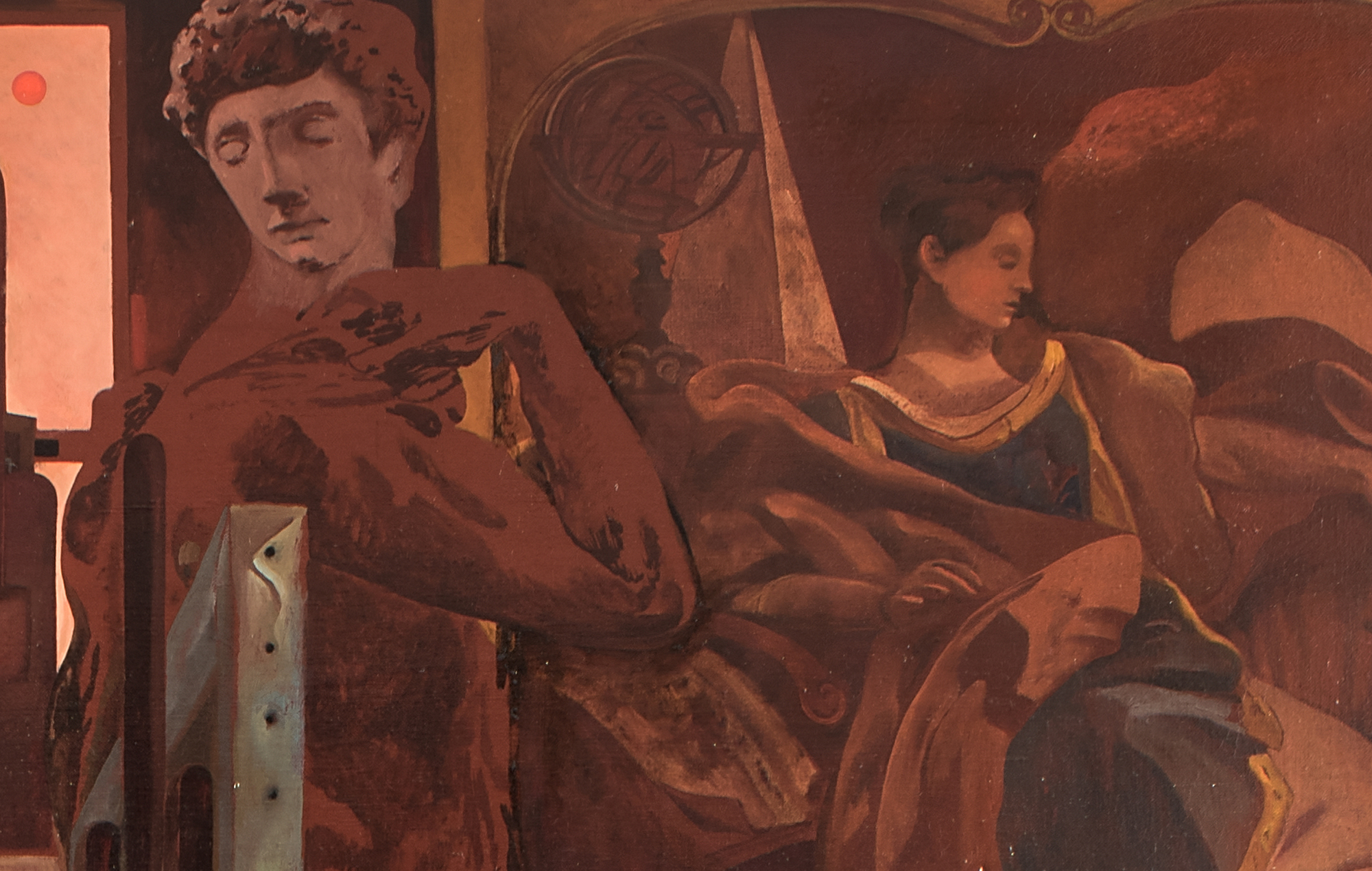MAX PELLEGRINI (b. 1945)



64,000
“Yes, irony is one of the elements of my painting. I make fun of myself and my neurotic fears and phobias and I turn the situation with ironic if not at times hilarious details. I placed a cat, for example, with phosphorescent eyes in a bucolic scene, or in the subject of Carnival I mix death, ridicule and joking.” (Antonio Monda, “Interview with Max Pellegrini,” in Max Pellegrini, ed. Danilo Eccher, 2014


